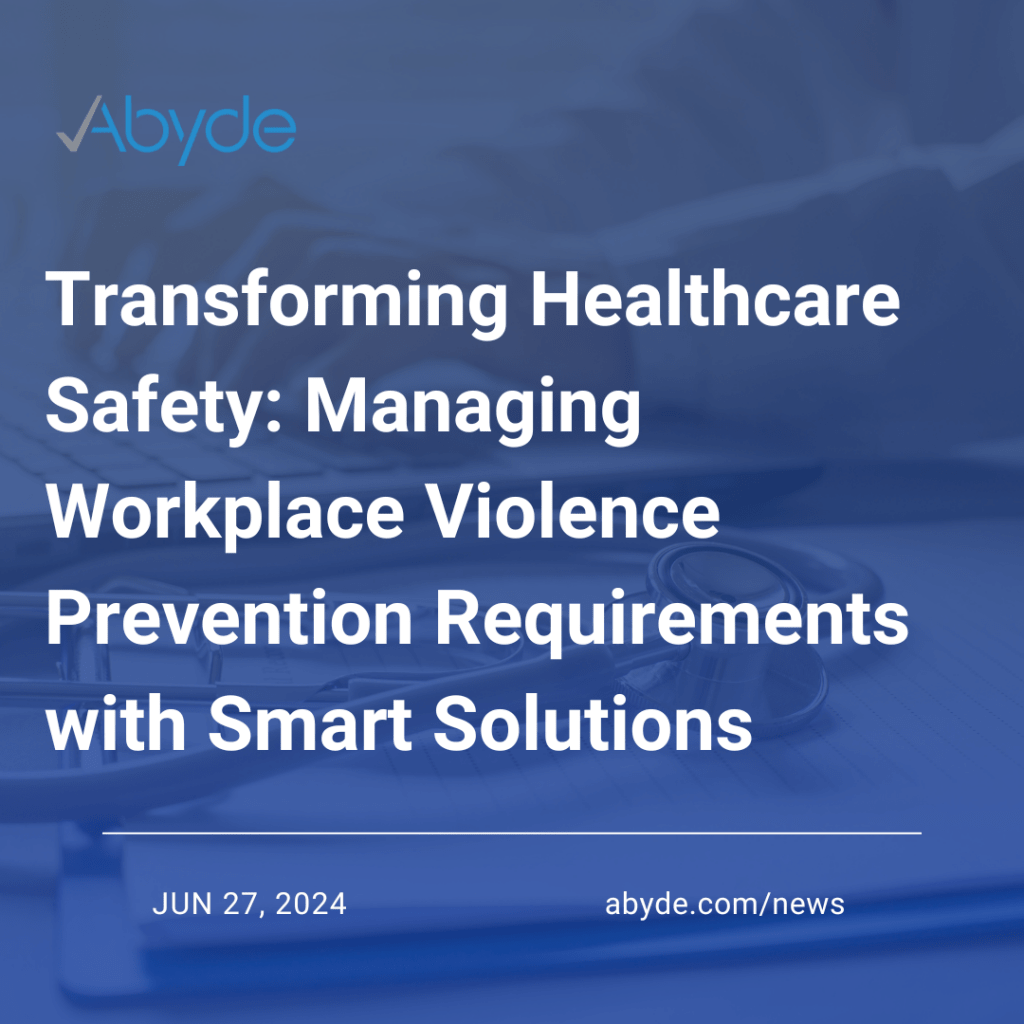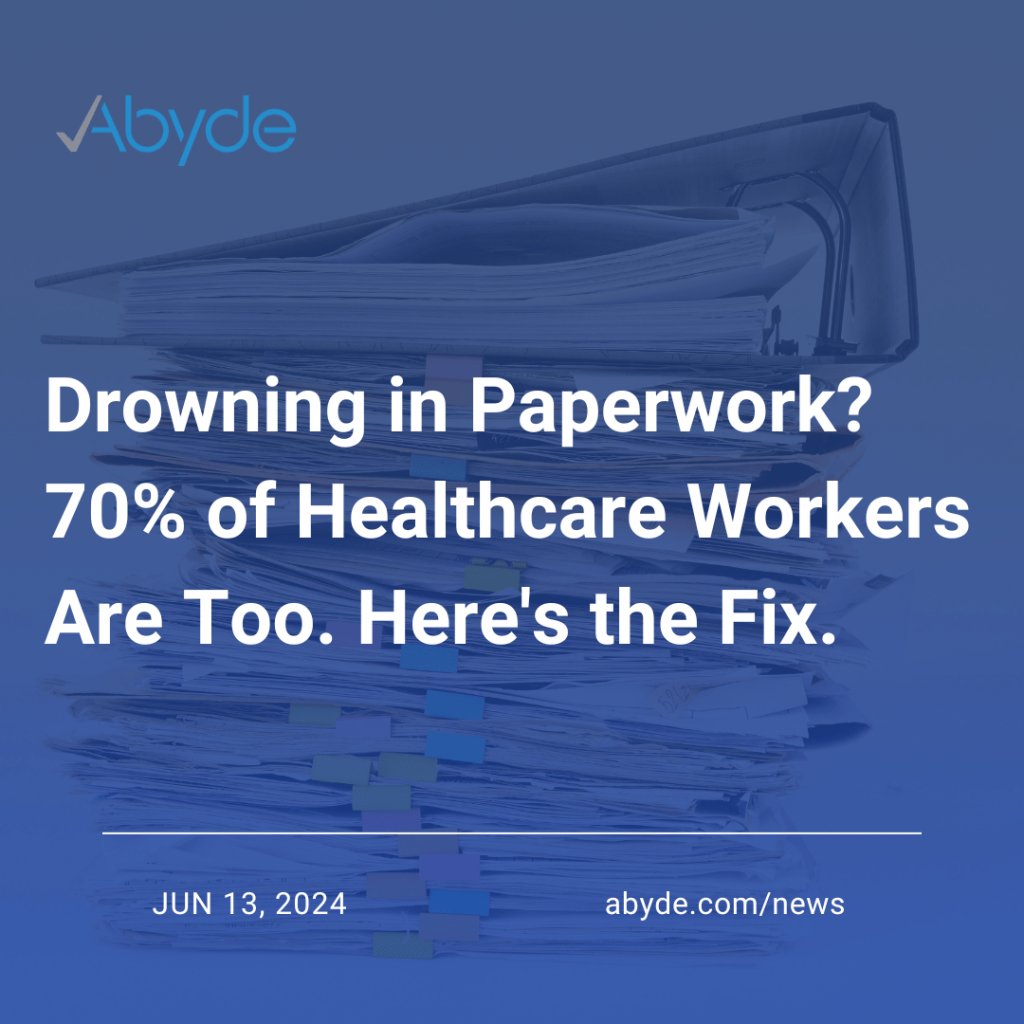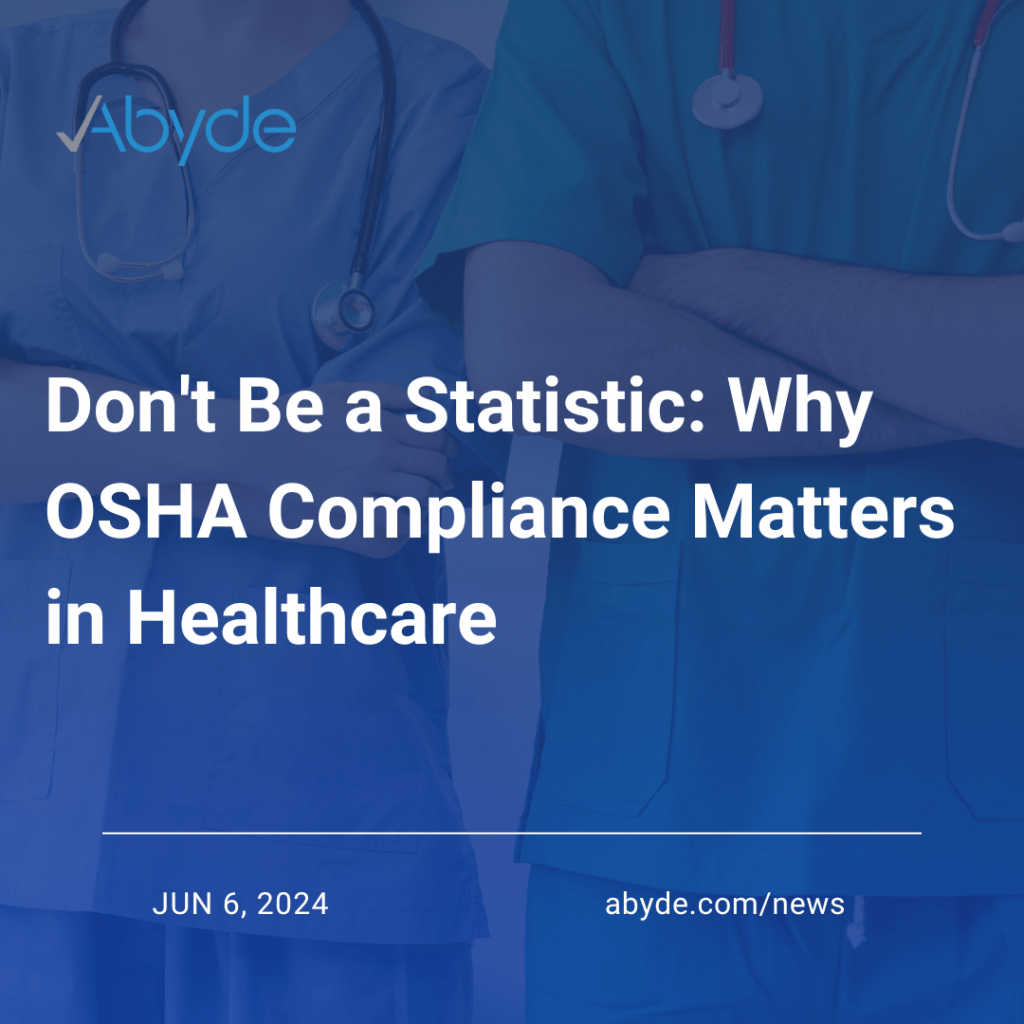June 27, 2024 Workplace violence, unfortunately, is a highly prevalent experience in healthcare. Shockingly, healthcare workers are five times more likely to experience workplace violence than any other industry. Despite the challenges, healthcare workers assume an essential role, and it’s crucial for staff to feel secure and supported in their environment. Legislation at the state level ensures that all staff, regardless of industry, receive proper training and care for workplace violence. For example, California has passed a workplace violence bill, SB 553, which will take effect on July 1st. This bill will significantly impact workplaces by mandating expanded documentation, training, and other measures related to workplace violence. While this is still at the state level, several states are enacting legislation around workplace violence. While California’s SB 553 is the first to be enacted, Texas is quickly following suit, with a similar law going into effect in September. As more states pass similar laws, they’re likely to become federal legislation, meaning regardless of state, it’s important to stay informed about new requirements. What is SB 553? SB 553, California’s workplace violence bill, is one of the newest pieces of legislation drafted by CalOSHA. This bill introduces new requirements, such as an expanded injury log for specific workplace violence injuries, thorough training, and a workplace violence prevention plan (WVPP). These new elements will ensure staff is properly educated on this topic and that a process is in place if a situation arises. Similar to HIPAA documentation, this documentation must be customized to fit your specific practice or business. Using templates won’t suffice. In the event of a workplace violence incident, your team must understand the process for handling the situation and identify the risks and vulnerabilities that could most affect them. This involves outlining designated roles and responsibilities. This detailed plan is known as a Workplace Violence Prevention Plan or WVPP and is a new requirement in all workplaces in California (and more states soon to follow). This bill provides a detailed process for preventing workplace violence. If your practice already follows CalOSHA’s requirements for workplace violence in healthcare, you are exempt from this new law for the general industry. It includes requirements for thorough training, a workplace violence protection plan, and mandatory incident reporting. Just as sharps injuries must be reported separately, workplace violence incidents must also be reported separately. How Managing OSHA for Healthcare with Smart Solutions Can Help As new laws are enacted, old documentation and processes can quickly become obsolete. The compliance landscape constantly changes, so staying informed is crucial to safeguard your practice. Intelligent, cloud-based software solutions like Abyde receive frequent updates, providing your practice with the latest information necessary to keep it secure and compliant with new laws. Dynamic software also rapidly updates your policies, procedures, logs, and more, continuously updating your documentation with the latest developments. Download Abyde’s Workplace Violence Prevention checklist today to see where your OSHA program currently stands to protect your business.
HIPAA for Dental Practices: Avoid the Most Common Fines
June 26, 2024 Did you know that as of 2023, less than half of dental offices in the United States are fully HIPAA compliant? Dentists play a crucial role in maintaining oral health and ensuring the safety of their patients’ Protected Health Information (PHI). Although HIPAA regulations can be complex, it’s essential to understand and comply with them to protect your dental practice and patients. This article explores the most common HIPAA fines for dentists and how you can manage them. Right of Access Under HIPAA, patients can access their medical records within 30 days of the first request and should not be charged unreasonable costs. Dentists have been fined several times for violating this right. A practice in Georgia took over a year to provide a patient with her medical records after she refused to pay a $170 copying fee. This incident violated the 30-day timeline, and the fee was also deemed unreasonable, resulting in a fine of $80,000. To uphold a patient’s right to access their medical records, it’s vital to manage record requests promptly and organize them. It’s also essential to avoid charging excessive fees for accessing these records. If you’re unsure about what would be considered a reasonable fee, the OCR has issued guidance suggesting a flat fee of a maximum of $6.50 for accessing records. Social Media Usage On top of managing your practice’s reputation in person, you have to manage it online. Online reviews are a shared resource patients use while selecting a new dentist. 94% of patients use online reviews while choosing a new medical provider. However, while managing your online presence, you must be HIPAA compliant. This means not sharing any of your patient’s PHI in reviews. A dental practice in North Carolina was fined $50,000 for improperly sharing a patient’s PHI online in response to a negative review. The practice shared significant PHI about the patient, which discredited the original review. No matter how inaccurate or false a review may be, sharing a patient’s PHI online is never justifiable. Keeping responses short and sweet is essential to avoid making a social media mistake. Even if someone has shared information in their review, you can’t mention that they are a patient at your practice. It’s essential to use a brief and general response while navigating HIPAA. If you receive a negative review, it’s crucial to stay calm. Getting upset for a few seconds isn’t worth facing thousands of dollars in fines. Next, take the conversation to a private channel. Respond to the comment with HIPAA-compliant communication, such as providing a phone number or encrypted email to further discuss the patient’s experience. Cybersecurity Access In our technology-driven world, most, if not all, dental practices utilize technology to create and store patient data. In recent years, cybersecurity concerns and hacks have infiltrated the healthcare system, with hacking causing 77% of large breaches. Controlling and training staff on technology use is vital for protecting your practice. In a rare case, a HIPAA violation resulted in jail time for an employee at a dental practice. This employee, a receptionist, abused her access to PHI, stealing patients’ identities and making significant purchases with them. She was sentenced to two to six years in prison for her crime. Encrypt and secure information properly to avoid cybersecurity-related fines. Additionally, assign roles and access to employees individually, with every employee having their own login. Periodically review employee access and activity to ensure technology is being used correctly. How Software Can Help There’s a better way to simplify the compliance process for your dental practice. Software offers the ability to streamline your administrative tasks, saving you time and letting you focus on taking care of your patients. Automated and dynamic software helps you be proactive in avoiding these common mistakes, pinpointing your vulnerabilities, and resolving them effectively. Schedule a consultation here to learn more about how Abyde’s intelligent solutions can help create a culture of compliance and protect your practice.
Senior Customer Success Specialist
This is for the job brief. This is for the job brief. This is for the job brief. This is for the job brief. This is for the job brief. This is for the job brief.
Drowning in Paperwork? 70% of Healthcare Workers Are Too. Here’s the Fix.
June 13, 2024 Did you know that more than 70% of healthcare workers spend over 10 hours a week on paperwork? When working in healthcare, the last thing you might expect is to spend most of your time on paperwork, but it’s a reality for many. Paperwork might seem monotonous and time-consuming, but it’s a crucial requirement for HIPAA. Your compliance program must be documented to prove you’re protecting your patients. Why can’t I use templates? It’s essential to avoid cutting corners with compliance paperwork. Personalized documentation is key, so using templates isn’t compliant. Templates are generic, whereas documentation represents the specific policies and procedures for your location that must be followed to protect your patients’ PHI (Protected Health Information). Many policies and procedures are required to ensure staff safety and PHI. Some examples include the Disaster Recovery Plan, the Breach Notification Policy, and the Electronic Data Disposal Policy. They must be personalized for your practice, such as including local emergency phone numbers in the Disaster Recovery Plan or defining specific roles and responsibilities in policies. Additionally, if responsibilities change, policies and procedures must be updated, ensuring the latest info is documented. By drafting personalized documentation, your practice ensures its staff knows their responsibilities regarding protecting PHI and the procedures that must be followed. What else is required documentation? Drafting documentation is the first step, but organizing the content is just as important. Policies and procedures should be easily accessible so staff can review them effortlessly. In any situation, your team should be able to access the plan quickly, stay calm, and review the documentation. The documentation should also be clear and understandable for the staff. Staff should have easy access to policies and procedures, which should be reviewed during onboarding to provide new employees with the necessary resources. How Software Solutions Can Help In the past, documentation was often seen as an overwhelming, overflowing binder, but that doesn’t have to be the case. As technology advances, your compliance program needs to keep up as well. Nowadays, healthcare workers can use software solutions to create personalized documentation quickly. Software solutions can help eliminate the possibility of human error and utilize cutting-edge technology to dynamically generate policies that meet the latest requirements in the healthcare industry. Almost all healthcare employees spend numerous hours every week on paperwork. So why not significantly reduce the time spent on these activities and achieve compliance in minutes? Software rapidly creates personalized documentation, including staff names and responsibilities, and provides organizational structure. Instead of disorganized physical binders, you can have an intuitive solution with policies and procedures hosted in the cloud that are easily accessible with an internet connection. To learn more about how Abyde can save your practice countless hours on documentation, schedule a software demo.
Don’t Be a Statistic: Why OSHA Compliance Matters in Healthcare
June 6, 2024 Did you know that the healthcare industry has some of the highest rates of illness and injury despite being a place for healing? OSHA, or the Occupational Safety and Health Administration, is the governing body that protects workers’ rights throughout all industries. Given the healthcare industry’s risks and hazards, such as exposure to bloodborne pathogens, sharps, chemicals, and more, healthcare workers’ rights under OSHA are particularly crucial. OSHA enforces the protection of healthcare workers’ rights through legislature, audits, and fines that every practice needs to know about. Why is OSHA Important in Healthcare? OSHA is vital in reducing risks and illnesses in the healthcare industry. Since its introduction, OSHA has led to a significant drop in workplace fatalities and diseases, with the average number of cases decreasing from 10.9 per 100 in 1972 to 2.7 in 2022 – a 75% decrease. Reducing workplace incidents empowers and protects healthcare workers. This confidence and protection translate to a culture of compliance, where better working conditions elevate patient care and, ultimately, create a healthier environment for everyone. What does it mean to be OSHA Compliant? Ensuring worker safety in healthcare requires ongoing attention. OSHA compliance must be proactive, involving the implementation of appropriate safeguards and regular, role-specific training. Practices need to provide training that covers workers’ roles and responsibilities so that they have the tools and knowledge necessary to stay safe at work. A Facility Risk Assessment (FRA), or analysis of a practice’s vulnerabilities, is required as part of a proactive OSHA compliance program. An FRA enables practices to address issues proactively before they escalate into unsafe workplace situations. OSHA compliance also involves providing workplace safety equipment, such as Personal Protective Equipment (PPE) like gloves, masks, and other healthcare gear. To maintain a safe workplace, it is important to have easily accessible and transparent policies and procedures for all employees. This provides clear guidance to the staff on how to handle specific situations. For instance, Safety Data Sheets provide details on proper precautions and the properties of substances when handling chemicals, which are essential for ensuring a safe workplace. Reporting these incidents and ensuring they are appropriately followed up is crucial when issues occur at work. Employees should also feel comfortable and safe discussing potential violations without fearing repercussions. How Cloud-based Software Solutions Can Help Managing OSHA can be complex for a practice, but utilizing a software solution can streamline the process. These intelligent solutions can dynamically manage OSHA requirements, like policies and procedures, ensuring clear documentation is easily accessible and always up to date, which minimizes risk to the business. Beyond streamlining workflows, compliance software is a centralized resource. From the FRA to user-friendly training modules, a comprehensive software suite empowers employees to stay safe and informed on the job. To learn more about how Abyde can assist your practice in developing a culture of OSHA compliance, schedule an educational consultation.



